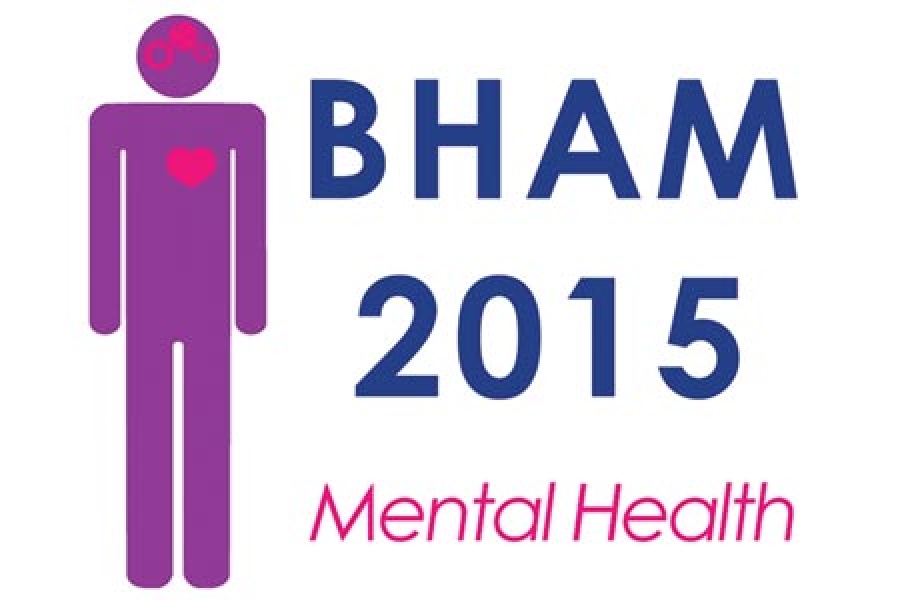Bisexual Health Awareness Month (BHAM) got off to a lively start March 2.
The month-long social-media campaign is organized by the Bisexual Resource Center (BRC), a Boston-based nonprofit that has been advocating on behalf of bisexuals since 1985.
Mental health is the theme of BHAM, now in its second year. Throughout March, the BRC will post regular updates on Facebook, Tumblr and Twitter. All of the information can be accessed via a central website: www.bihealthmonth.wordpress.com.
Julia Canfield, president of the BRC, described the goals of BHAM as two-fold. On the one hand, the campaign is designed to disseminate to the public the latest research findings regarding mental-health issues confronting bisexuals. And, on the other, it is meant to spur organizations and individuals working with bisexuals to action, whether they are employers, government officials or health-care professionals.
“It would be really just terrific if these organizations, these individuals, no matter where they are, really just look at what they’re doing and see how they can improve it, to then in turn really serve their bi clients or bi community members even better,” Canfield said.
Each week in March, BHAM will highlight a particular aspect of mental-health issues related to bisexuals: statistics, intersectionality, resources and action. The organizers hope that people will take this information and “Like” it, repost it, Tweet it and otherwise help to spread the word.
BHAM was initiated in March 2014. The first year’s theme was “Bi the Way, Our Health Matters Too!” The inaugural campaign covered a variety of topics, including safer sex and sexual violence. It also drew heavily on recent health-related research findings specific to bisexuals.
“Over the past few years, there’s been much more of a research trend of studying bisexual individuals on their own in terms of health disparities or breaking down the ‘LGBT’ into these groups,” Canfield said. “And what we’ve been seeing is that, when that actually happens, bisexual people are shown to have much higher disparities compared to gays, lesbians and heterosexual people.”
These disparities can be alarming. In 2013, for example, the Centers for Disease Control noted that “nearly half of female bisexual victims (48.2 percent) and more than one-quarter of female heterosexual victims (28.3 percent) experienced their first rape between the ages of 11 and 17 years.”
Canfield, who works in public health, was familiar with these findings, but said that, to many, the news was unexpected.
“People were very surprised to hear that these disparities existed,” Canfield said. “A lot of them said they didn’t realize that bisexual individuals have such higher rates of health disparities across the board.”
Response to the first BHAM was overwhelmingly positive. Organizations like the Human Rights Campaign and GLAAD helped to publicize the campaign, and thoughtful articles on BHAM appeared everywhere from the online lesbian arts and culture magazine Autostraddle to the mainstream media outlet Huffington Post.
Although BRC members were prepared to meet with some mild pushback in the form of biphobia or bi erasure, Canfield believes that the preponderance of evidence prevented that.
“One of the things that really kept a lot of that away was simply just the data that we have,” Canfield said. “And I think for a lot of people, it’s really hard to argue with the statistics and data that are becoming a lot more prevalent and overwhelming.”
The mental-health component of the first BHAM generated considerable interest. A variety of studies reported that bisexuals experience higher rates of, for example, anxiety and depression when compared to both heterosexuals and gays and lesbians.
Canfield and her colleagues at the BRC already had plenty of anecdotal information confirming that.
“In our work in the community as an organization, mental health is just something that is, unfortunately, a very much shared experience with bi individuals. We hear it all the time,” she said.
If BHAM can raise awareness of the mental-health disparities facing bisexuals, it will have done a good job. But the campaign won’t truly be a success until the data it provides results in programs and resources that improve life for bisexuals.
Currently, Canfield said, bisexuals “aren’t getting the resources and the programs that they need.”
“We’ve been saying it for years,” she continued. “We’re starting to finally get this data, and yet it’s not translating to the programming and the resources and funding that we need.”
With a gentle nudge from initiatives like BHAM, the well-being of bisexuals may just yet become a year-round concern.

